Events
| Name | organizer | Where |
|---|---|---|
| MBCC “Doing Business with Mongolia seminar and Christmas Receptiom” Dec 10. 2025 London UK | MBCCI | London UK Goodman LLC |
NEWS
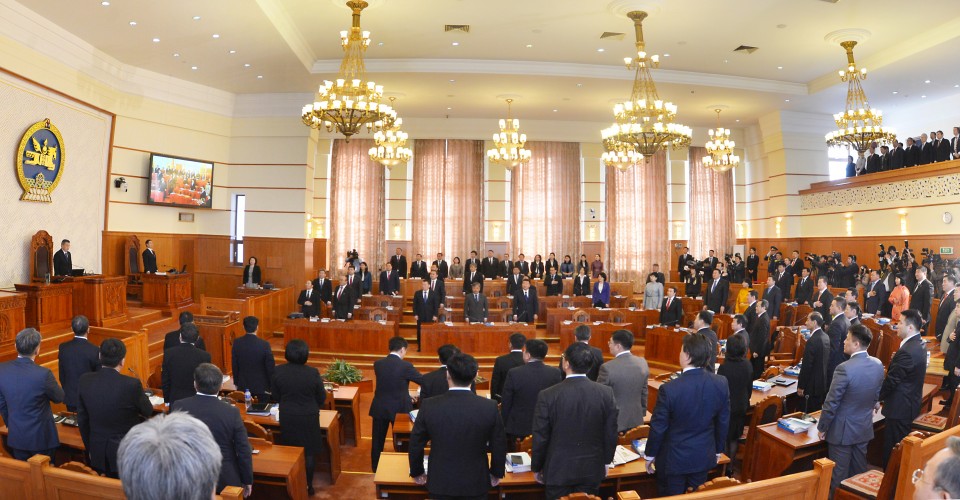
Parliament discusses online license grants www.zgm.mn
At the parliamentary session on Friday, MPs discussed the bill on transparency and control of licenses. The draft regulated the granting and extensions of licenses via one-stop service centers or online.
In addition, the permits are classified into two categories. Under the law, licenses shall be effective for less than 5 years and the minimum period will be less than 3 years. The rights and obligations of the license, registration, information of the consent, the electronic database, and activities to prohibit the operation are included in the bill. It also provides a clear description of the type and the permits granted by a single and multiple-authority consents.
The project conceives submitting the person authorized to issue the permit, increasing responsibility and oversight, setting the grounds and procedures for transferring the rights to others, simplifying licensing procedures and establishing a unified database. The draft law has been developed to establish a legal environment for the Licensing Supervisory Board to provide authorized methodological guidance, to evaluate the effectiveness of the law, to make a conclusion and to reform the law.
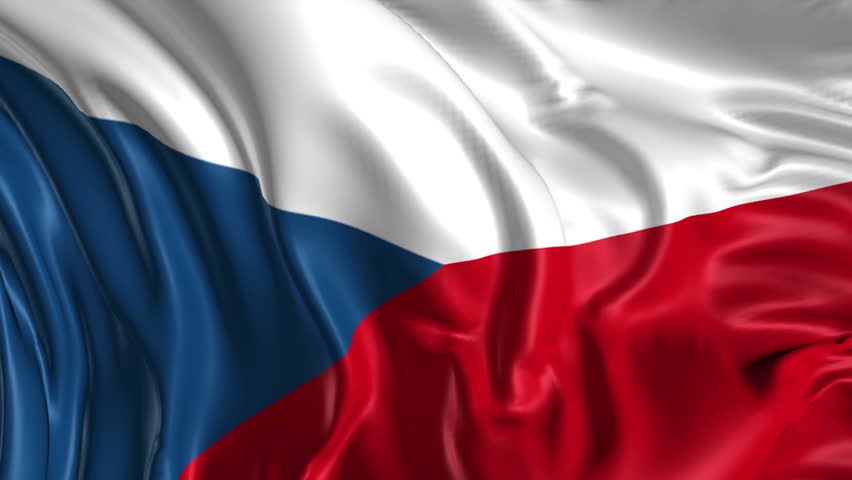
Foreign Minister to pay visit to the Czech Republic www.montsame.mn
Ulaanbaatar /MONTSAME/ Minister of Foreign Affairs of Mongolia D.Tsogtbaatar is to pay visit to the Czech Republic on May 20-21 at the invitation of his Czech counterpart Tomas Petricek.
During the visit Foreign Minister will pay courtesy call on the Prime Minister of the country and two Speakers of the Parliament, hold meetings with the Ministers of Agriculture and Industry and Trade. The parties will also sign some documents on bilateral cooperation and relations.
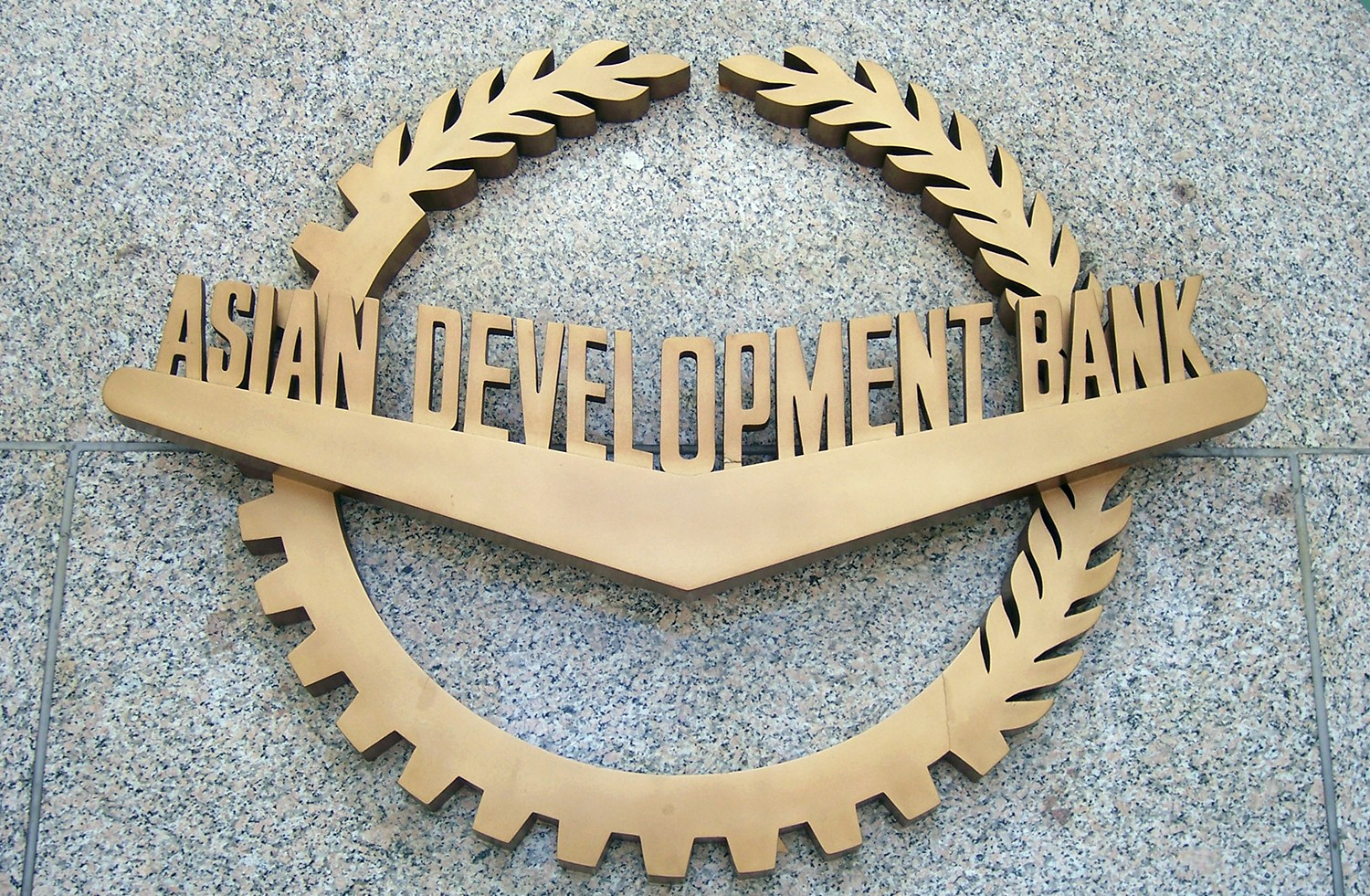
ADB to raise private business loans www.montsame.mn
Mongolian private companies have possibility to borrow loans up to a combined USD1 billion from Asian Development Bank, underlines Finance Minister of Mongolia Ch.Khurelbaatar. The Finance Minister took part in the 52nd annual meeting of ADB Governors held on May 1-6, sharing Mongolia’s views and positions with representatives of ADB, its largest development partner, and other partners.
The significant amount of financing for Mongolia’s private sector is a reflection of ADB Strategy 2030’s target to expand its private sector operations. During the annual meeting, ADB Governors appreciated the target that one-third of its operations by number will be private sector operations by 2024. ADB also targets a substantial increase in commercial co-financing. ADB’s new lending, equity investments, and guarantees to private companies reached USD3.1 billion in 2018, a 37 percent increase from the previous year.
“The performance of ADB’s private sector operations is helping the region address many challenges including improving its infrastructure, creating jobs, and enhancing access to finance,” said ADB Vice-President for Private Sector Operations and Public-Private Partnerships Mr. Diwakar Gupta. “ADB will continue to expand private sector assistance by diversifying into new and frontier markets, scaling up financing for agribusiness, health, and education, and moving into emerging infrastructure sectors such as water, waste, and sanitation.”
The bank’s Development Effectiveness Report of Private Sector Operations 2018 was released at the annual meeting and according to the report, there were a record 32 new private sector projects committed in 2018, compared with 27 the previous year. Direct financing was complemented by a record $7.2 billion in commercial cofinancing last year, representing almost 50% of all cofinancing mobilized by ADB.
“There are huge opportunities to resolve many issues by attracting private sector investment instead of Government borrowing. Merely creating clear legal frameworks, it is possible to attract investment from private sector in all sectors. For example, civil aviation liberation can be achieved when government defines its policy for it. As a result, many airlines would enter the market, conducting more flights fostering tourism development. The motivation of private companies for making investments is naturally profit. Therefore, when government creates a favorable legal environment for it there will have sufficient financial sources for accelerating development of Mongolia”.
“Moreover, we agreed with ADB on issuing a bond to be denominated in national currency allowing only private companies to buy it. The bond will be denominated in national currency-Tugrig, as it will be more profitable to private companies. When a bond is denominated in foreign currency there is a risk of exchange rate variation. For example, the Chinngis bond was issued when exchange rate of USD was equal to MNT1300, but the USD rate grew up to MNT2600 when the bond should have been repaid. Under this arrangement, ADB would be responsible for bond risks. The bond will provide affordable financial sources needed for private companies. We have agreed on general issues and not defined the details yet.”
ADB’s active private sector operations have already contributed to the region’s economy, providing jobs for an additional 313,308 people and training 322,303 beneficiaries, mostly in financial literacy. Access to finance has been improved through active private sector projects for more than 6.8 million people and micro and small and medium-sized companies, while other projects have contributed to the education of 9,455 additional students. ADB’s private sector clients have achieved carbon emissions reductions of 11.4 million tons annually. Energy projects dominated the commitment portfolio of ADB’s Private Sector Operations Department in 2018, accounting for USD1.7 billion or around 54 percent of total commitments. The volume of financial intermediary projects committed last year almost doubled to over USD900 million, while Private Sector Operations Department’s Microfinance Risk Participation and Guarantee Program achieved record volumes by facilitating USD271 million in local currency loans to microfinance institutions.
Deputy Governor of Bank of Mongolia (Mongolbank) B.Lhagvasuren, who also attended the ADB annual meeting, highlighted that cooperation of Mongolbank with ADB is successful and productive, and mentioned the implementation of the Payment System Modernization Project as a good example.
This USD25 million project will upgrade the payment system infrastructure up to international standards. “Within the project the real time gross settlement system for high-value transactions, which means immediate transfer of big amount of money or more than USD3 million to the account when performing a transaction, has been modernized. We have a payment system for low value transactions which operates on a program developed by IT professionals of the Mongolbank. To modernize the program an international open bid had been announced and we are buying a ready-to-use program of Montran corporation of USA. This program is widely used in Latin America and the Middle East countries besides the USA. The program will be installed soon and put into operation later this year.
Moreover, within the project the card payment system is to be upgraded as well. Soon payment cards released by Mongolian commercial banks will have an international standard- Mongolian chip. “Chip card closes all the possibilities of stealing card information or misusing the card while it is possible for the card with magnetic stripe, which are commonly used in Mongolia today. As the chip card meets international standards the cards would be usable in other countries.”
Generally, the policies for ADB and the Mongolian government to support the private sector, diversify economy through developing agribusiness, food industry and tourism are closely aligned. Therefore, we will continue our partnership with ADB in the long term, noted Finance Minister Ch.Khurelbaatar.
Recently, framework financing agreement with ADB has been discussed at the Parliament of Mongolia, having major support.
...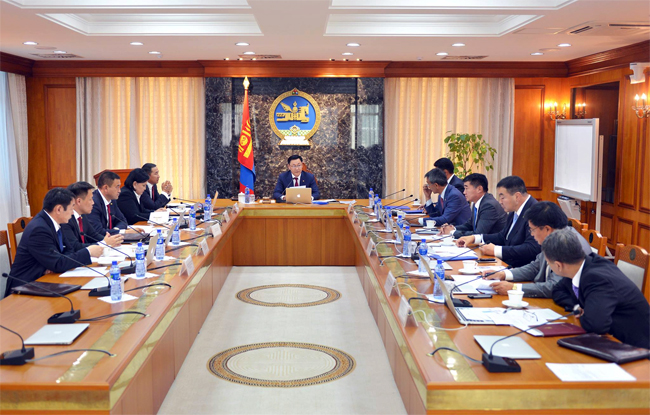
Cabinet approves 7 new Mongolian Ambassadors www.news.mn
The cabinet approved the appointment of 7 new ambassadors on May 17. In accordance with procedure, the list must be approved by the president.
The proposed new ambassadors are as follows;
-B.Dorj to be appointed as Mongolian ambassador to Poland.
-J.Sereenjav to be appointed to Laos.
-Sh.Battsetseg to be appointed to Cuba.
-N.Ankhbayar to be appointed to Australia.
-T.Janabazar to be appointed to Sweden.
-V.Enkhbold to be appointed as ambassador and permanent representative of Mongolia to the United Nations
-D.Davaasuren to be appointed to South Korea.

President meets The Hu band www.montsame.mn
Today, President Kh.Battulga has received producer and singer B. Dashdondog and members of The Hu, heavy metal band of Mongolia, which performs in a new genre so called Hunnu Rock.
Producer B.Dashdondog formed The Hu band in 2016, but spent many years on researches in order to get the band enter the music market. Currently, the band is working to release its first album ‘Gerege’ with nine songs this year, of which two songs namely ‘Yu ve Yu ve’ and ‘Wolf Totem’ have been released. Within less than one year, the two videos on Youtube have had about 27 million views.
A song ‘Wolf Totem’ topped a chart of the American iTunes top 100 rock song downloads, while another song ‘Yu ve Yu ve’ was charted in first ten of Billboard.
President Kh. Battulga appraised that their achievement promotes Mongolia worldwide while advising them to keep on striving to make best works and be unified even when they become world-famous.
In the end of the meeting, the President wished success to their future endeavors.

Korean Air Carried out Global Planting Project in Mongolia www.etbtravelnews.global
This year was especially meaningful as employees from Delta Air Lines joined the green efforts to celebrate the one-year anniversary of the joint venture between the two airlines. Korean Air and Delta Air Lines aim to work together through not only the successful joint venture but also joint community services in the future, according to Korean Air. About 120 Korean Air employees and 30 Delta Air Lines employees worked with local residents and students to plant trees in Baganuur, Mongolia, a region undergoing rapid desertification. Korean Air has been growing the “Korean Air Forest” in the area by planting trees every year since 2004, with the aim to stop desertification and protect the environment. “We are very proud to contribute to ecological restoration efforts in Mongolia. For the last 16 years, the Korean Air Forest has grown to cover 44 hectare or 440,000 m² of land. After we planted 5,000 maple trees this year, the Korean Air Forest now has a total of 125,000 trees,” said Kwang Ho Ko, Head of Regional Headquarters, China. “We were also excited that our partner Delta Air Lines joined us this year. I hope together we can find more ways to give back to the environment and society in the future.” Korean Air is managing the forest through diverse, systematic efforts, by hiring local forestation experts and educating local residents on environmental awareness. “We were honored to be invited as part of the celebration of our joint venture’s one-year anniversary with Korean Air to participate with them for the first time in their annual tree planting event in Mongolia,” said Lisa H. Duval, Managing Director of Asia Pacific, Delta Air Lines, who participated in the project. “We had 30 employees from over a dozen locations in Asia and the Americas, including members of our internal employee organization ‘Green Up’, who came together with Korean Air employees for this important event. We strongly believe that what is good for the planet, is good for Delta and our partners worldwide.” Korean Air also regularly donates computers to public schools in Baganuur, Mongolia, contributing to relations between Korea and Mongolia. The airline plans to donate computers, desks and gym equipment to local schools this year as well. As a part of the Global Planting Project, Korean Air has been growing the “Korean Air Forest” in Kubuqi desert since 2007, in the Inner Mongolia region of China, where the yellow dust storm originates.
...
Mongolia bans burning low-grade coal for domestic use in capital www.xinnhuanet.com
ULAN BATOR, May 15 (Xinhua) -- A ban on burning of low-grade coal for domestic use in the Mongolian capital Ulan Bator came into force on Wednesday, with the aim of reducing air pollution.
"Today, we all witnessed a historic decision to improve air quality in the capital city and protect ourselves from air pollution," Lamjav Byambasuren, vice health minister of the country, said at the opening of an event on raising public awareness of air pollution.
Public participation in air pollution reduction is important, Byambasuren said, calling on residents of the city to comply with the ban on the burning of low-grade coal for domestic use.
According to a statement issued by the National Committee for Environmental Pollution Reduction, households and enterprises who violate the ban will be fined from 300,000 Mongolian tugriks (over 113 U.S. dollars) to 3 million Mongolian tugriks (about 1,134 dollars).
Households in Ulan Bator will be supplied with processed fuel instead of raw coal.
Air pollution is one of the most pressing issues in Ulan Bator, which is home to around half of the country's 3.2-million population, and poses a major threat to the Mongolian people's health.
More than 800,000 residents, half of Ulan Bator's population, live in slums, also known as ger districts. They burn raw coal and other flammable materials to keep warm and cook during the six-month-long winter.
It is estimated that 80 percent of air pollution in the city is caused by ger stoves.
Since the early 2000s, the Mongolian government has carried out a number of measures aimed at reducing air pollution in Ulan Bator. However, the city has not seen a significant reduction in air pollution levels.

Kaisun Holdings and China Railway Engineering Construction Mongolia signed agreement for construction on Mongolia Choir Railway Platform, opening up logistics along China, Mongolia and Russia www.finance.yahoo.com
HONG KONG, May 16, 2019 /PRNewswire/ -- On May 15, 2019, Kaisun Holdings Limited (stock code: 8203) (Kaisun Holdings) and China Railway Engineering Construction Mongolia signed construction agreement for construction on Mongolia Choir Railway Platform. This project opens up logistic along China, Mongolia and Russia by providing full supply chain management services in the region, enhancing development of logistic along the Belt and Road.
Mongolia Choir Railway Platform is one of the largest private enterprises in Mongolia. The railway platform in Choir city of Mongolia is located in the middle eastern part of the country, and around 250 kilometers away from its capital Ulaanbaatar, covering a total area of 35,000 square meters, with an annual loading capacity of 1.8 million tons. The cooperation between Kaisun Holdings and China Railway Engineering Construction Mongolia will further strengthen economic ties between Mainland China - Hong Kong - Mongolia. Being the only one railway for logistics transportation between China, Mongolia and Russia, the Railway Platform will provide loading and unloading, warehousing, customs declaration and logistic services to enterprises in both China and Mongolia.
As a pioneer in the Belt and Road, Kaisun Holdings started off to plant seeds along the region as early as 2011. Since China started the Belt and Road Initiative in 2013, China planned its development with neighbouring countries, China-Russia-Mongolia corridor began with cooperation in logistics. Management team of Kaisun Holdings is of the view that under the current macro policy and economic trend, investment in infrastructure and logistic should be a good entry point. The Choir logistic project will also have great synergy with Kaisun's other existing investments such as Shandong Kailai Logistic Center.
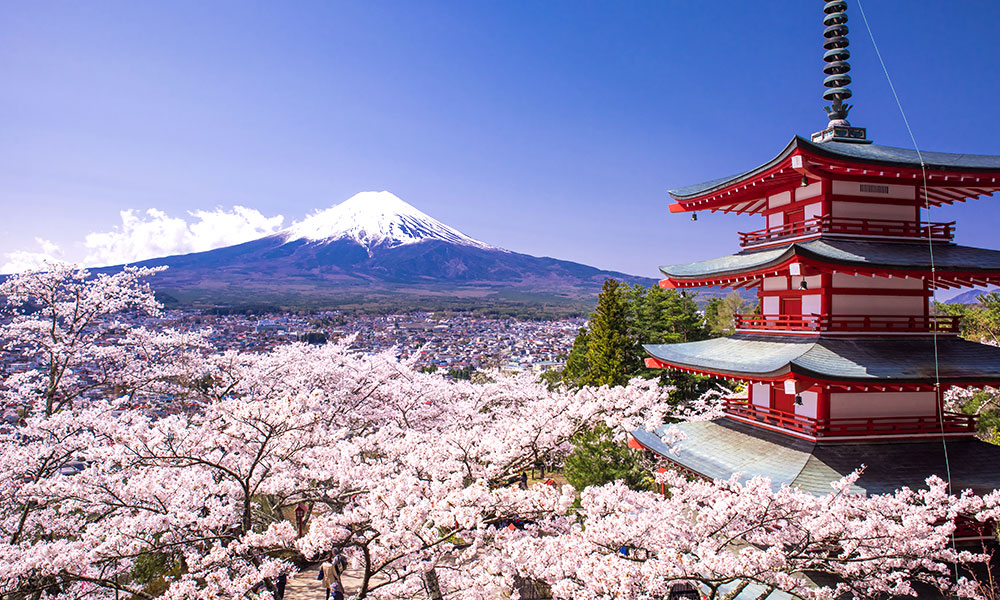
Mongolian boxers to train in Japan for 2020 Olympics www.ocasia.org
Ulaanbaatar, Mongolia, May 15, 2019: Mongolia’s national team boxers will undergo joint-training with their Japanese counterparts in the run-up to the 2020 Tokyo Olympics.
The Mongolian Boxing Federation along with the Physical Culture and Sports Authority of Mongolia signed a cooperation agreement with representatives of Shimada city of Japan in Ulaanbataar on Tuesday.
A Japanese delegation visited the Mongolian capital with the aim of exchanging views on training for the Olympics jointly with the Mongolian national boxing team.
Under the agreement, seven male and five female boxers, three coaches, a sports physician and three researchers of the Mongolian national boxing team will be involved in joint training with the Japanese national team in Shimada from July 19-28.
These dates were decided so that the Mongolian boxers could acclimatise to the conditions in Japan in July, the month when the 2020 Summer Olympics will get underway.
A second joint training session will also be held in January.
Mongolia won one bronze medal in boxing at Rio 2016 - a bronze for Dorjnyambuugin Otgondalai in the men’s lightweight division.
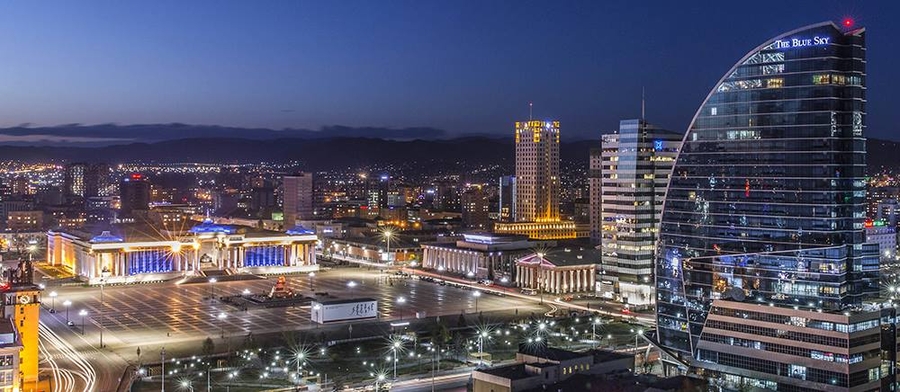
Mongolia’s GDP rises 8.6 percent in Q1 www.zgm.mn
In the first quarter of 2019, GDP of Mongolia at 2010 constant price reached MNT 3.5 trillion by preliminary estimation of production approach, increased by MNT 279.9 billion or 8.6 percent compared to the same period of the previous year. This increase was mainly driven by the 8 percent increase in the service sector, which is worth MNT 127.7 billion (wholesale and retail trade sector by MNT 52.2 billion or 13.9 percent) and industry, construction sector by MNT 124.9 billion or 11.2 percent.
In addition, the inflation measured by the consumer price index (CPI) at the national level increased by 1 percent from the previous month, by 2.8 percent from the end of the previous year and by 7 percent yoy.
7 percent increase of CPI was mainly contributed by increases in prices of food and non-alcoholic beverages group by 8.3 percent (meat and meat products by 20.4 percent, non-alcoholic beverages by 6.6 percent and milk, dairy products and eggs by 1.5 percent), alcoholic beverages and tobacco group by 3.6 percent, transport by 5.5 percent, housing, water, electricity and fuels group by 8.9 percent (electricity, gas and other fuels by 9.6 percent), and health by 9.5 percent.
The money supply (broad money or M2) reached MNT 19.9 trillion at the end of April 2019, showing an increase of MNT 188.7 billion from the previous month and by MNT 3.6 trillion from the same period of the previous year.
The national currency in circulation reached MNT 933 billion, increased by MNT 35.2 billion or 3.9 percent from the previous month. But the number is MNT 4.6 billion lower than the previous year.
In the first four months of 2019, the total equilibrated revenue and grants of the General Government Budget amounted to MNT 3.1 trillion and total expenditure and net lending amounted to MNT 2.8 trillion, resulting in a surplus of MNT 286.5 billion in the equilibrated balance.
In April, the equilibrated revenue and grants of the General Government Budget reached MNT 968.6 billion, an increase of MNT 259.5 billion or 36.6 percent, whereas total expenditure and net lending reached MNT 876.4 billion, and by MNT 59.6 billion or 7.3 percent from the previous month. In the first quarter of 2019, current and capital account balance deficit by preliminary result reached USD 277.4 million, which is USD 70.8 million lower compared to the same period of last year. The current account deficit reached USD 297.6 million, which was mainly due to USD 553.2 million deficit in services account and USD 196.2 million deficit in the primary account.
- «
- 1
- 2
- 3
- 4
- 5
- 6
- 7
- 8
- 9
- 10
- 11
- 12
- 13
- 14
- 15
- 16
- 17
- 18
- 19
- 20
- 21
- 22
- 23
- 24
- 25
- 26
- 27
- 28
- 29
- 30
- 31
- 32
- 33
- 34
- 35
- 36
- 37
- 38
- 39
- 40
- 41
- 42
- 43
- 44
- 45
- 46
- 47
- 48
- 49
- 50
- 51
- 52
- 53
- 54
- 55
- 56
- 57
- 58
- 59
- 60
- 61
- 62
- 63
- 64
- 65
- 66
- 67
- 68
- 69
- 70
- 71
- 72
- 73
- 74
- 75
- 76
- 77
- 78
- 79
- 80
- 81
- 82
- 83
- 84
- 85
- 86
- 87
- 88
- 89
- 90
- 91
- 92
- 93
- 94
- 95
- 96
- 97
- 98
- 99
- 100
- 101
- 102
- 103
- 104
- 105
- 106
- 107
- 108
- 109
- 110
- 111
- 112
- 113
- 114
- 115
- 116
- 117
- 118
- 119
- 120
- 121
- 122
- 123
- 124
- 125
- 126
- 127
- 128
- 129
- 130
- 131
- 132
- 133
- 134
- 135
- 136
- 137
- 138
- 139
- 140
- 141
- 142
- 143
- 144
- 145
- 146
- 147
- 148
- 149
- 150
- 151
- 152
- 153
- 154
- 155
- 156
- 157
- 158
- 159
- 160
- 161
- 162
- 163
- 164
- 165
- 166
- 167
- 168
- 169
- 170
- 171
- 172
- 173
- 174
- 175
- 176
- 177
- 178
- 179
- 180
- 181
- 182
- 183
- 184
- 185
- 186
- 187
- 188
- 189
- 190
- 191
- 192
- 193
- 194
- 195
- 196
- 197
- 198
- 199
- 200
- 201
- 202
- 203
- 204
- 205
- 206
- 207
- 208
- 209
- 210
- 211
- 212
- 213
- 214
- 215
- 216
- 217
- 218
- 219
- 220
- 221
- 222
- 223
- 224
- 225
- 226
- 227
- 228
- 229
- 230
- 231
- 232
- 233
- 234
- 235
- 236
- 237
- 238
- 239
- 240
- 241
- 242
- 243
- 244
- 245
- 246
- 247
- 248
- 249
- 250
- 251
- 252
- 253
- 254
- 255
- 256
- 257
- 258
- 259
- 260
- 261
- 262
- 263
- 264
- 265
- 266
- 267
- 268
- 269
- 270
- 271
- 272
- 273
- 274
- 275
- 276
- 277
- 278
- 279
- 280
- 281
- 282
- 283
- 284
- 285
- 286
- 287
- 288
- 289
- 290
- 291
- 292
- 293
- 294
- 295
- 296
- 297
- 298
- 299
- 300
- 301
- 302
- 303
- 304
- 305
- 306
- 307
- 308
- 309
- 310
- 311
- 312
- 313
- 314
- 315
- 316
- 317
- 318
- 319
- 320
- 321
- 322
- 323
- 324
- 325
- 326
- 327
- 328
- 329
- 330
- 331
- 332
- 333
- 334
- 335
- 336
- 337
- 338
- 339
- 340
- 341
- 342
- 343
- 344
- 345
- 346
- 347
- 348
- 349
- 350
- 351
- 352
- 353
- 354
- 355
- 356
- 357
- 358
- 359
- 360
- 361
- 362
- 363
- 364
- 365
- 366
- 367
- 368
- 369
- 370
- 371
- 372
- 373
- 374
- 375
- 376
- 377
- 378
- 379
- 380
- 381
- 382
- 383
- 384
- 385
- 386
- 387
- 388
- 389
- 390
- 391
- 392
- 393
- 394
- 395
- 396
- 397
- 398
- 399
- 400
- 401
- 402
- 403
- 404
- 405
- 406
- 407
- 408
- 409
- 410
- 411
- 412
- 413
- 414
- 415
- 416
- 417
- 418
- 419
- 420
- 421
- 422
- 423
- 424
- 425
- 426
- 427
- 428
- 429
- 430
- 431
- 432
- 433
- 434
- 435
- 436
- 437
- 438
- 439
- 440
- 441
- 442
- 443
- 444
- 445
- 446
- 447
- 448
- 449
- 450
- 451
- 452
- 453
- 454
- 455
- 456
- 457
- 458
- 459
- 460
- 461
- 462
- 463
- 464
- 465
- 466
- 467
- 468
- 469
- 470
- 471
- 472
- 473
- 474
- 475
- 476
- 477
- 478
- 479
- 480
- 481
- 482
- 483
- 484
- 485
- 486
- 487
- 488
- 489
- 490
- 491
- 492
- 493
- 494
- 495
- 496
- 497
- 498
- 499
- 500
- 501
- 502
- 503
- 504
- 505
- 506
- 507
- 508
- 509
- 510
- 511
- 512
- 513
- 514
- 515
- 516
- 517
- 518
- 519
- 520
- 521
- 522
- 523
- 524
- 525
- 526
- 527
- 528
- 529
- 530
- 531
- 532
- 533
- 534
- 535
- 536
- 537
- 538
- 539
- 540
- 541
- 542
- 543
- 544
- 545
- 546
- 547
- 548
- 549
- 550
- 551
- 552
- 553
- 554
- 555
- 556
- 557
- 558
- 559
- 560
- 561
- 562
- 563
- 564
- 565
- 566
- 567
- 568
- 569
- 570
- 571
- 572
- 573
- 574
- 575
- 576
- 577
- 578
- 579
- 580
- 581
- 582
- 583
- 584
- 585
- 586
- 587
- 588
- 589
- 590
- 591
- 592
- 593
- 594
- 595
- 596
- 597
- 598
- 599
- 600
- 601
- 602
- 603
- 604
- 605
- 606
- 607
- 608
- 609
- 610
- 611
- 612
- 613
- 614
- 615
- 616
- 617
- 618
- 619
- 620
- 621
- 622
- 623
- 624
- 625
- 626
- 627
- 628
- 629
- 630
- 631
- 632
- 633
- 634
- 635
- 636
- 637
- 638
- 639
- 640
- 641
- 642
- 643
- 644
- 645
- 646
- 647
- 648
- 649
- 650
- 651
- 652
- 653
- 654
- 655
- 656
- 657
- 658
- 659
- 660
- 661
- 662
- 663
- 664
- 665
- 666
- 667
- 668
- 669
- 670
- 671
- 672
- 673
- 674
- 675
- 676
- 677
- 678
- 679
- 680
- 681
- 682
- 683
- 684
- 685
- 686
- 687
- 688
- 689
- 690
- 691
- 692
- 693
- 694
- 695
- 696
- 697
- 698
- 699
- 700
- 701
- 702
- 703
- 704
- 705
- 706
- 707
- 708
- 709
- 710
- 711
- 712
- 713
- 714
- 715
- 716
- 717
- 718
- 719
- 720
- 721
- 722
- 723
- 724
- 725
- 726
- 727
- 728
- 729
- 730
- 731
- 732
- 733
- 734
- 735
- 736
- 737
- 738
- 739
- 740
- 741
- 742
- 743
- 744
- 745
- 746
- 747
- 748
- 749
- 750
- 751
- 752
- 753
- 754
- 755
- 756
- 757
- 758
- 759
- 760
- 761
- 762
- 763
- 764
- 765
- 766
- 767
- 768
- 769
- 770
- 771
- 772
- 773
- 774
- 775
- 776
- 777
- 778
- 779
- 780
- 781
- 782
- 783
- 784
- 785
- 786
- 787
- 788
- 789
- 790
- 791
- 792
- 793
- 794
- 795
- 796
- 797
- 798
- 799
- 800
- 801
- 802
- 803
- 804
- 805
- 806
- 807
- 808
- 809
- 810
- 811
- 812
- 813
- 814
- 815
- 816
- 817
- 818
- 819
- 820
- 821
- 822
- 823
- 824
- 825
- 826
- 827
- 828
- 829
- 830
- 831
- 832
- 833
- 834
- 835
- 836
- 837
- 838
- 839
- 840
- 841
- 842
- 843
- 844
- 845
- 846
- 847
- 848
- 849
- 850
- 851
- 852
- 853
- 854
- 855
- 856
- 857
- 858
- 859
- 860
- 861
- 862
- 863
- 864
- 865
- 866
- 867
- 868
- 869
- 870
- 871
- 872
- 873
- 874
- 875
- 876
- 877
- 878
- 879
- 880
- 881
- 882
- 883
- 884
- 885
- 886
- 887
- 888
- 889
- 890
- 891
- 892
- 893
- 894
- 895
- 896
- 897
- 898
- 899
- 900
- 901
- 902
- 903
- 904
- 905
- 906
- 907
- 908
- 909
- 910
- 911
- 912
- 913
- 914
- 915
- 916
- 917
- 918
- 919
- 920
- 921
- 922
- 923
- 924
- 925
- 926
- 927
- 928
- 929
- 930
- 931
- 932
- 933
- 934
- 935
- 936
- 937
- 938
- 939
- 940
- 941
- 942
- 943
- 944
- 945
- 946
- 947
- 948
- 949
- 950
- 951
- 952
- 953
- 954
- 955
- 956
- 957
- 958
- 959
- 960
- 961
- 962
- 963
- 964
- 965
- 966
- 967
- 968
- 969
- 970
- 971
- 972
- 973
- 974
- 975
- 976
- 977
- 978
- 979
- 980
- 981
- 982
- 983
- 984
- 985
- 986
- 987
- 988
- 989
- 990
- 991
- 992
- 993
- 994
- 995
- 996
- 997
- 998
- 999
- 1000
- 1001
- 1002
- 1003
- 1004
- 1005
- 1006
- 1007
- 1008
- 1009
- 1010
- 1011
- 1012
- 1013
- 1014
- 1015
- 1016
- 1017
- 1018
- 1019
- 1020
- 1021
- 1022
- 1023
- 1024
- 1025
- 1026
- 1027
- 1028
- 1029
- 1030
- 1031
- 1032
- 1033
- 1034
- 1035
- 1036
- 1037
- 1038
- 1039
- 1040
- 1041
- 1042
- 1043
- 1044
- 1045
- 1046
- 1047
- 1048
- 1049
- 1050
- 1051
- 1052
- 1053
- 1054
- 1055
- 1056
- 1057
- 1058
- 1059
- 1060
- 1061
- 1062
- 1063
- 1064
- 1065
- 1066
- 1067
- 1068
- 1069
- 1070
- 1071
- 1072
- 1073
- 1074
- 1075
- 1076
- 1077
- 1078
- 1079
- 1080
- 1081
- 1082
- 1083
- 1084
- 1085
- 1086
- 1087
- 1088
- 1089
- 1090
- 1091
- 1092
- 1093
- 1094
- 1095
- 1096
- 1097
- 1098
- 1099
- 1100
- 1101
- 1102
- 1103
- 1104
- 1105
- 1106
- 1107
- 1108
- 1109
- 1110
- 1111
- 1112
- 1113
- 1114
- 1115
- 1116
- 1117
- 1118
- 1119
- 1120
- 1121
- 1122
- 1123
- 1124
- 1125
- 1126
- 1127
- 1128
- 1129
- 1130
- 1131
- 1132
- 1133
- 1134
- 1135
- 1136
- 1137
- 1138
- 1139
- 1140
- 1141
- 1142
- 1143
- 1144
- 1145
- 1146
- 1147
- 1148
- 1149
- 1150
- 1151
- 1152
- 1153
- 1154
- 1155
- 1156
- 1157
- 1158
- 1159
- 1160
- 1161
- 1162
- 1163
- 1164
- 1165
- 1166
- 1167
- 1168
- 1169
- 1170
- 1171
- 1172
- 1173
- 1174
- 1175
- 1176
- 1177
- 1178
- 1179
- 1180
- 1181
- 1182
- 1183
- 1184
- 1185
- 1186
- 1187
- 1188
- 1189
- 1190
- 1191
- 1192
- 1193
- 1194
- 1195
- 1196
- 1197
- 1198
- 1199
- 1200
- 1201
- 1202
- 1203
- 1204
- 1205
- 1206
- 1207
- 1208
- 1209
- 1210
- 1211
- 1212
- 1213
- 1214
- 1215
- 1216
- 1217
- 1218
- 1219
- 1220
- 1221
- 1222
- 1223
- 1224
- 1225
- 1226
- 1227
- 1228
- 1229
- 1230
- 1231
- 1232
- 1233
- 1234
- 1235
- 1236
- 1237
- 1238
- 1239
- 1240
- 1241
- 1242
- 1243
- 1244
- 1245
- 1246
- 1247
- 1248
- 1249
- 1250
- 1251
- 1252
- 1253
- 1254
- 1255
- 1256
- 1257
- 1258
- 1259
- 1260
- 1261
- 1262
- 1263
- 1264
- 1265
- 1266
- 1267
- 1268
- 1269
- 1270
- 1271
- 1272
- 1273
- 1274
- 1275
- 1276
- 1277
- 1278
- 1279
- 1280
- 1281
- 1282
- 1283
- 1284
- 1285
- 1286
- 1287
- 1288
- 1289
- 1290
- 1291
- 1292
- 1293
- 1294
- 1295
- 1296
- 1297
- 1298
- 1299
- 1300
- 1301
- 1302
- 1303
- 1304
- 1305
- 1306
- 1307
- 1308
- 1309
- 1310
- 1311
- 1312
- 1313
- 1314
- 1315
- 1316
- 1317
- 1318
- 1319
- 1320
- 1321
- 1322
- 1323
- 1324
- 1325
- 1326
- 1327
- 1328
- 1329
- 1330
- 1331
- 1332
- 1333
- 1334
- 1335
- 1336
- 1337
- 1338
- 1339
- 1340
- 1341
- 1342
- 1343
- 1344
- 1345
- 1346
- 1347
- 1348
- 1349
- 1350
- 1351
- 1352
- 1353
- 1354
- 1355
- 1356
- 1357
- 1358
- 1359
- 1360
- 1361
- 1362
- 1363
- 1364
- 1365
- 1366
- 1367
- 1368
- 1369
- 1370
- 1371
- 1372
- 1373
- 1374
- 1375
- 1376
- 1377
- 1378
- 1379
- 1380
- 1381
- 1382
- 1383
- 1384
- 1385
- 1386
- 1387
- 1388
- 1389
- 1390
- 1391
- 1392
- 1393
- 1394
- 1395
- 1396
- 1397
- 1398
- 1399
- 1400
- 1401
- 1402
- 1403
- 1404
- 1405
- 1406
- 1407
- 1408
- 1409
- 1410
- 1411
- 1412
- 1413
- 1414
- 1415
- 1416
- 1417
- 1418
- 1419
- 1420
- 1421
- 1422
- 1423
- 1424
- 1425
- 1426
- 1427
- 1428
- 1429
- 1430
- 1431
- 1432
- 1433
- 1434
- 1435
- 1436
- 1437
- 1438
- 1439
- 1440
- 1441
- 1442
- 1443
- 1444
- 1445
- 1446
- 1447
- 1448
- 1449
- 1450
- 1451
- 1452
- 1453
- 1454
- 1455
- 1456
- 1457
- 1458
- 1459
- 1460
- 1461
- 1462
- 1463
- 1464
- 1465
- 1466
- 1467
- 1468
- 1469
- 1470
- 1471
- 1472
- 1473
- 1474
- 1475
- 1476
- 1477
- 1478
- 1479
- 1480
- 1481
- 1482
- 1483
- 1484
- 1485
- 1486
- 1487
- 1488
- 1489
- 1490
- 1491
- 1492
- 1493
- 1494
- 1495
- 1496
- 1497
- 1498
- 1499
- 1500
- 1501
- 1502
- 1503
- 1504
- 1505
- 1506
- 1507
- 1508
- 1509
- 1510
- 1511
- 1512
- 1513
- 1514
- 1515
- 1516
- 1517
- 1518
- 1519
- 1520
- 1521
- 1522
- 1523
- 1524
- 1525
- 1526
- 1527
- 1528
- 1529
- 1530
- 1531
- 1532
- 1533
- 1534
- 1535
- 1536
- 1537
- 1538
- 1539
- 1540
- 1541
- 1542
- 1543
- 1544
- 1545
- 1546
- 1547
- 1548
- 1549
- 1550
- 1551
- 1552
- 1553
- 1554
- 1555
- 1556
- 1557
- 1558
- 1559
- 1560
- 1561
- 1562
- 1563
- 1564
- 1565
- 1566
- 1567
- 1568
- 1569
- 1570
- 1571
- 1572
- 1573
- 1574
- 1575
- 1576
- 1577
- 1578
- 1579
- 1580
- 1581
- 1582
- 1583
- 1584
- 1585
- 1586
- 1587
- 1588
- 1589
- 1590
- 1591
- 1592
- 1593
- 1594
- 1595
- 1596
- 1597
- 1598
- 1599
- 1600
- 1601
- 1602
- 1603
- 1604
- 1605
- 1606
- 1607
- 1608
- 1609
- 1610
- 1611
- 1612
- 1613
- 1614
- 1615
- 1616
- 1617
- 1618
- 1619
- 1620
- 1621
- 1622
- 1623
- 1624
- 1625
- 1626
- 1627
- 1628
- 1629
- 1630
- 1631
- 1632
- 1633
- 1634
- 1635
- 1636
- 1637
- 1638
- 1639
- 1640
- 1641
- 1642
- 1643
- 1644
- 1645
- 1646
- 1647
- 1648
- 1649
- 1650
- 1651
- 1652
- 1653
- 1654
- 1655
- 1656
- 1657
- 1658
- 1659
- 1660
- 1661
- 1662
- 1663
- 1664
- 1665
- 1666
- 1667
- 1668
- 1669
- 1670
- 1671
- 1672
- 1673
- 1674
- 1675
- 1676
- 1677
- 1678
- 1679
- 1680
- 1681
- 1682
- 1683
- 1684
- 1685
- 1686
- 1687
- 1688
- 1689
- 1690
- 1691
- 1692
- 1693
- 1694
- »






